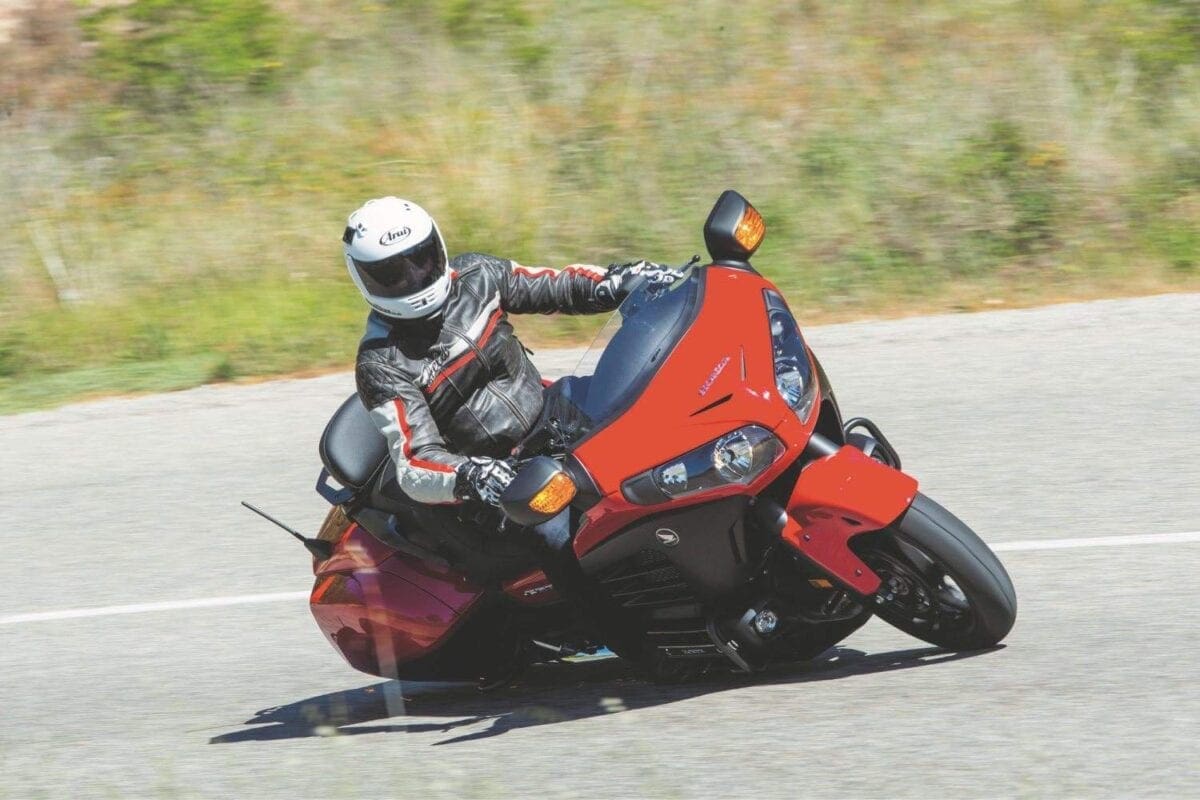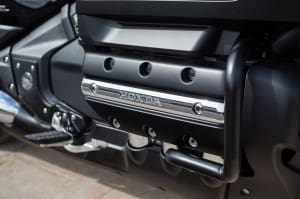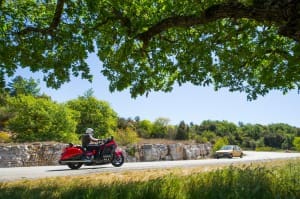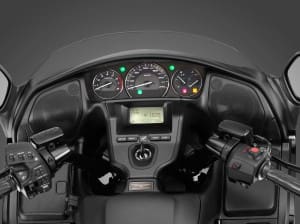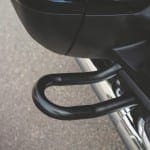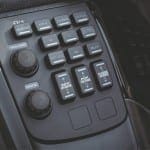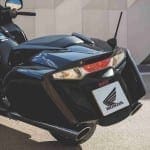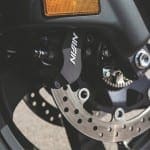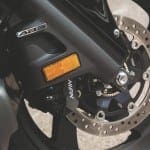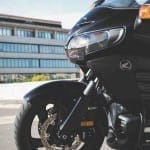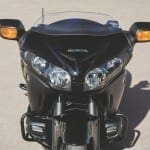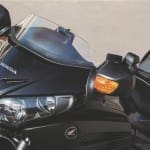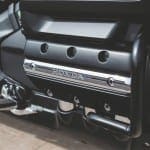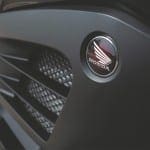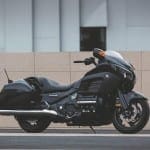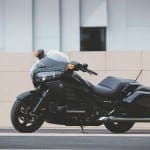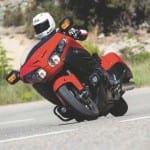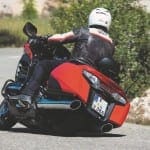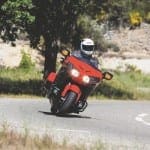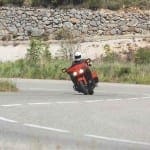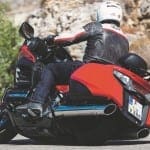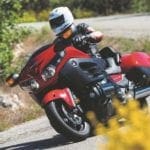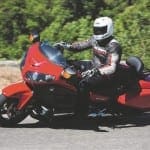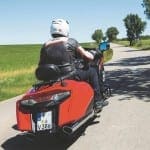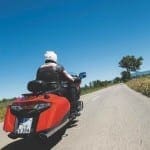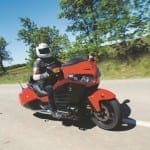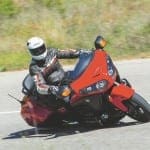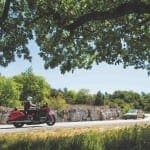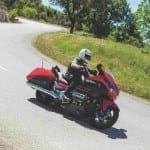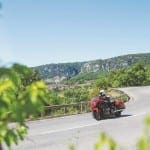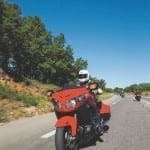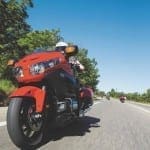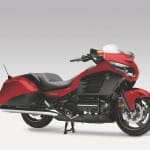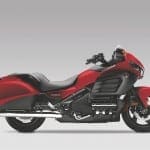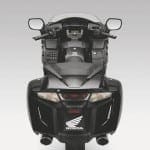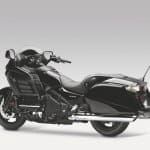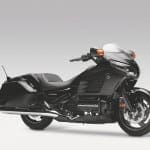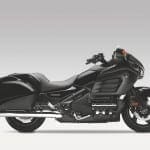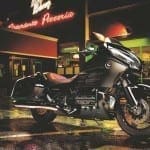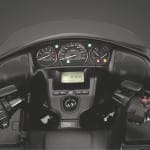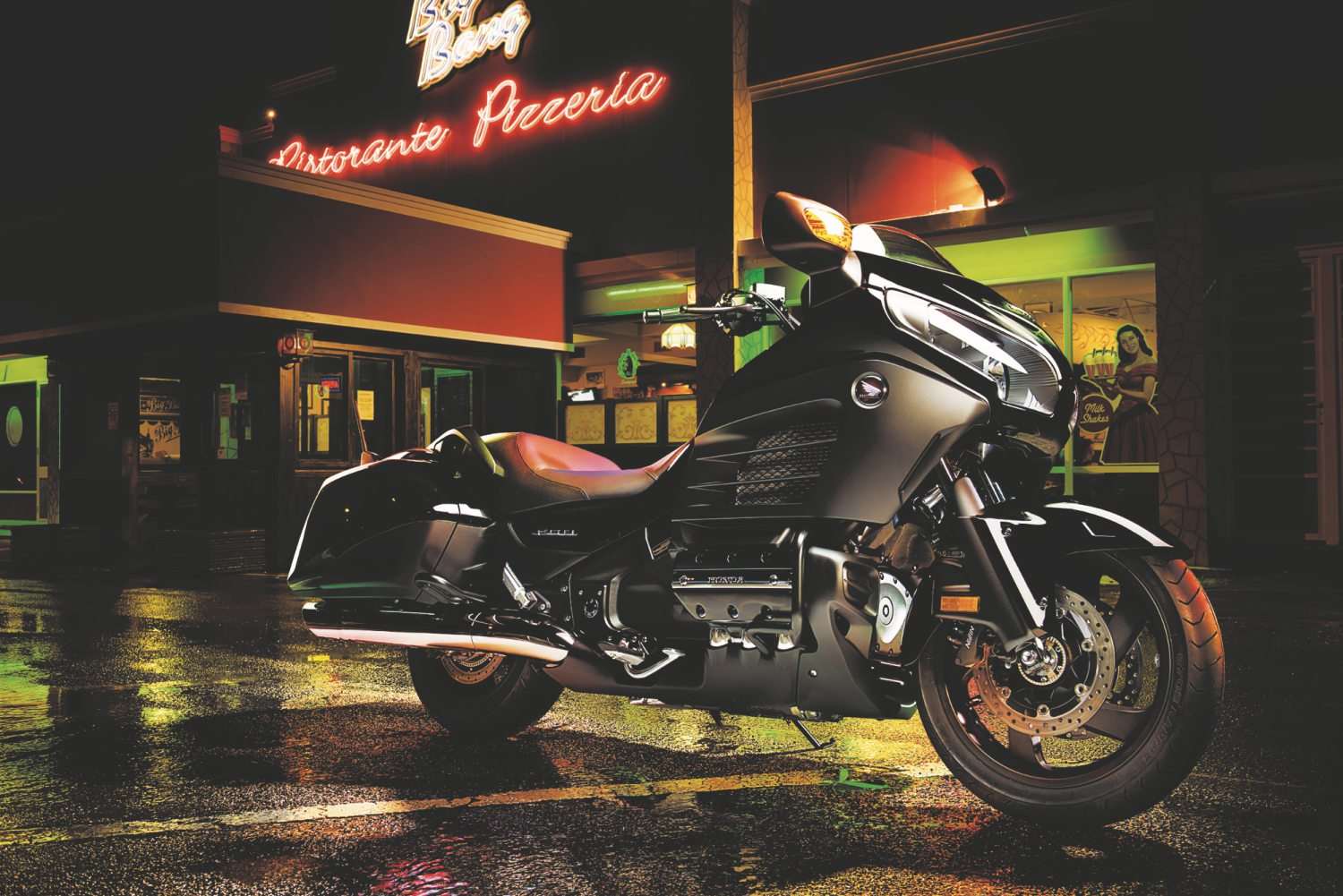£19,999 | 117bhp@5500rpm | 123lb-ft@4000rpm | Flat six-cylinder liquid-cooled four-stroke
Saving a hefty five grand on the price of Honda’s iconic GL1800 Gold Wing is not to be sniffed at, and while luggage capacity is reduced, and some of the bells and whistles are missing, this is still one incredibly capable – and fun – machine.
14 years old, and utterly stunning: The flat-six, single-overhead-cam, 12-valve motor is basically unchanged since the 2000 Gold Wing. A three-stage catalytic converter has helped it breeze through Euro III emission regulations, and despite its age, taking charge of one of these iconic lumps should be on every biker’s bucket list.
Huge amounts of torque are available from a standing start, right through to the 6000 rpm redline. Initially, it’s easy to hit the limiter in first gear, but recalibrate your brain, and you’ll find yourself mostly running in third through the twisties, or dropping into the overdrive fifth for motorway cruising.
Some cruisers can leave you feeling vulnerable when trying to get past cars, but even brief overtaking opportunities are easy to grab with the jet-like thrust of the six 305cc cylinders. See a gap, twist, then roll off – it really is that simple.
A shaft drive keeps things simple, and the gearbox is positive and reliable. It’s not a sportsbike-fast ‘box, but the solid feeling cogs drop easily into place on the rare occasions you find yourself wanting to change.
Sticking to straight roads would be an insult to Honda’s engineers – this bike handles the way that something almost twice the weight of a CBR600RR never should. It’s still 36kg lighter than the GL1800 (20kg of that is from losing the top box) and with the seat 15mm lower than the full-size ‘Wing, the F6B feels far from heavy – even at very low speed – thanks to a low centre-of-gravity.
The 45mm unadjustable anti-dive forks work with a preload adjustable mono shock, attached to the single-sided swingarm via a Pro-Link linkage.
Dual-Combined ABS comes as standard, with a pair of three-piston calipers biting 296mm discs on the front, and one three-piston caliper and 316mm disc at the rear – more than enough to haul the machine to a standstill.
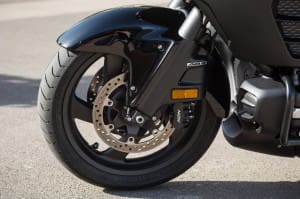 Dual Combined brakes explained
Dual Combined brakes explained
Honda’s Combined braking system links the rear brake pedal to the front calipers. The Dual Combined system fitted to the F6B also links the front brakes to the rear caliper.
The rear-to-front on this bike sees the outside two of the three pistons in the rear caliper operated by the foot lever, along with the two centre pistons of the front calipers. This provides solid braking, without losing the confidence that occasionally dragging the back brake can give you. It’s also useful in the US, where many riders never use the front lever.
The front brake link is more complex – the left brake caliper ‘floats’ on the disc. As it bites, the rotational force pushes the caliper up slightly, which actuates a second master-cylinder. This then operates the centre piston of the rear caliper. However, a gate valve sits in this line, reducing the pressure under hard braking, so preventing the rear from locking up when weight is rapidly transferred to the front of the bike. It’s a clever system, and very unintrusive.
If you want the ‘king of tourers’, you’re going to need to buy the £24,999 GL1800 Gold Wing Deluxe, but unless you really need that extra storage capacity, the F6B ‘bagger’ is a very serious contender. The 25.5 litre panniers each easily swallow a full-face lid and plenty more besides, and combine with front-fairing storage to offer a big 53.8 litres of space for your pants and socks.
The four-speaker stereo system works great (a Bluetooth connection would be appreciated, but it supports iPod or USB Flash Drive connectivity, and is compatible with MP3, WMA and AAC formats), but you lose the GL1800’s sat-nav, airbag, electric reverse gear, cruise control, illuminated switchgear, auto-cancelling indicators and seat heaters, though there’s still a pair of heated grips fitted. Traction control would be nice on a bike with this much torque, but it’s only really an issue on very loose, gravelly lay-bys.
If you want the burbling bark of a Harley, then you might not appreciate the deep, bassy throb of a flat-six, but for comfort, handling and performance, the F6B is superb. If you’re not covering big miles, the F6C saves a further £2000 by losing the luggage and many of the frills. It’s got a slightly more aggressive feel to it, whilst keeping the comfortable ride and excellent handling and performance.
A bike of this size really shouldn’t handle as well as it does, but somehow the steering is light, precise and relatively fast. Like any cruiser-styled bike, when hurrying through tight bends it’s not hard to hear the odd scrape, but as the folding foot-pegs are the first things to touch down, you have plenty of warning, and more than enough lean left in reserve for when things tighten up mid-corner.
The analogue clocks are clear and easy to read, with a small LCD display below them offering music information (with compatible devices), air temperature, low fuel warning, odometer/trip meters and a graphic display when you haven’t correctly closed the panniers.
The screen is very low, but works well, keeping your head clear of any serious buffeting, and with the spacious seats the F6B is a luxurious place to be. You’ll need to read the manual to understand the huge array of buttons on the left fairing, but it’s very easy to imagine spending many happy hours with my wife, touring Europe on this brilliant bike.
Tested by: John Milbank Photos by: Zep Gori, Francesc Montero, Ula Serra, Felix Romero
TECH SPEC
Price: £19,999
Engine: 1832cc flat six-cylinder liquid-cooled four-stroke
Power: 117bhp (87kW)@5500rpm
Torque: 123lb-ft (167Nm)@4000rpm
Curb weight: 385kg
Seat height: 725mm
Tank size: 25 litres

